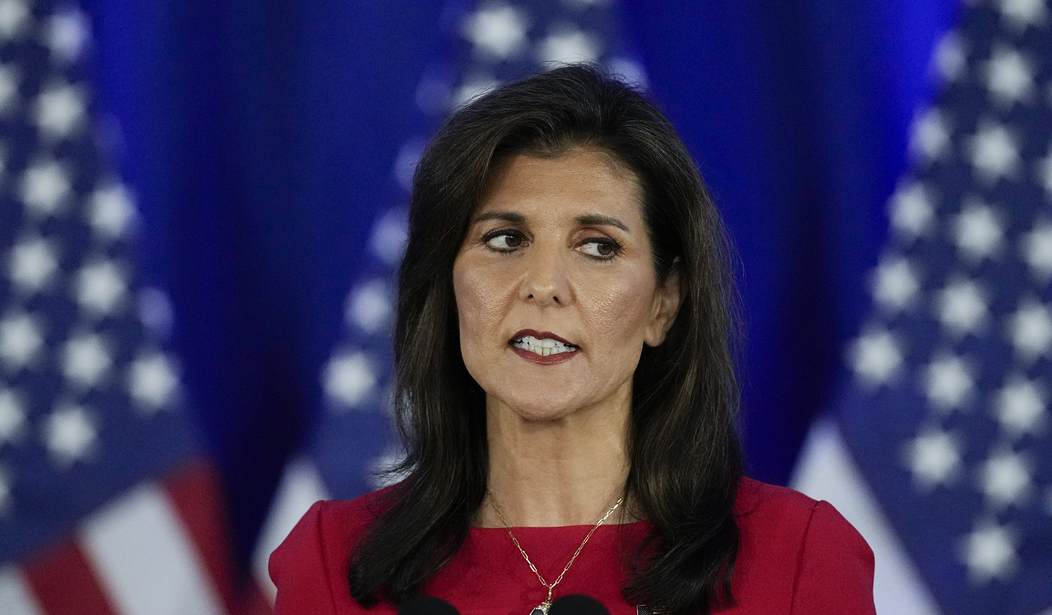Donald Trump won the Pennsylvania Republican primary with 82.8% of the vote. The Keystone State's primary is closed, meaning only Republicans can vote.
But is this cause for worry? Trump won Pennsylvania in 2016 by 44,000 votes. Biden won the state in 2020 by 80,000. However, former candidate Nikki Haley, who dropped out a month ago, received 16.5% of the vote in this year's primary, or about 156,000 votes. That's a healthy slice of the electorate in a state so evenly divided.
We can assume that a significant portion of Haley's votes are going to be "hold your nose and vote for Trump" voters. The Dispatch's David Drucker writes, "Protest votes in favor of Haley have been a persistent problem for Trump, signaling a portion of the GOP is dissatisfied with him despite his status as the presumptive nominee."
The Washington Post's Aaron Blake compiled a list of states with the "protest votes."
Percentages voting against Trump in closed (i.e. GOP-only) primaries/caucuses:
— Aaron Blake (@AaronBlake) April 24, 2024
3/2 Idaho 15%
3/5 Okla. 18%
3/5 Tennessee 19.5%
3/5 Utah 44%
(Haley drops out)
3/19 Florida 19%
3/19 Kansas 24.5%
4/2 Conn. 22%
4/2 N.Y. 18%
4/23 Pennsylvania 16.5%
Note that most of those states are deep red or deep blue, meaning that the "protest vote" against Trump matters little. Except for Pennsylvania.
“This is a huge red flag for the Trump campaign in a battleground state,” Republicans Against Trump, an anti-Trump political initiative, wrote. “Many Republicans will never vote for Donald Trump.”
That's true. And it's also true that many Democrats, as they did in 2016 and 2020, will vote for Trump.
The key question for the Trump team is where those votes in Pennsylvania were lost.
Biggest takeaway from yesterday’s primary in Pennsylvania: Trump is hemorrhaging votes in the Philadelphia suburbs.
— Matt McDermott (@mattmfm) April 24, 2024
Look at the Nikki Haley protest vote in:
Montgomery - 25%
Delaware - 24%
Chester - 24%
Lancaster - 20%
Bucks - 19%
Major red flags for Republicans.
All things being equal, McDermott might have a point. But all things are not equal, especially when it comes to support for Donald Trump. The anti-Trump vote has been set in stone for eight years. The question is how many of those suburban votes are still going to go Republican in November?
Her 17% margin does “not necessarily” indicate Trump is a weak candidate, Michael Barone, a political analyst for the Washington Examiner and resident fellow emeritus at the American Enterprise Institute, a right-leaning think tank, wrote in a post on X.
“Party registration is a lagging indicator, and in a state like PA where most people have stayed put a long time, the body of registered Republicans will include many people — especially affluent college grads — who regularly vote Democratic in November,” Barone wrote.
Biden is looking to exploit the Haley vote and find a way to incorporate it into his campaign. Just as importantly, he's looking to tap into the Haley donors and get some cash from them.
But sources familiar with the president’s 2024 strategy said the campaign is in the process of “testing messages with disenchanted Haley voters” to determine which appeals are effective at wooing this cohort and how Biden might incorporate them into his overall reelection game plan. Concurrently, conversations between wealthy Biden donors and their Republican counterparts who contributed to Haley’s presidential bid have accelerated.
The probability is that most Haley voters will vote Republican in November. But in a close election — which Pennsylvania is expected to be — literally every vote counts. Trump and his team know this, which is why they're working overtime to bring as many Haley voters back into the fold as possible.










Join the conversation as a VIP Member